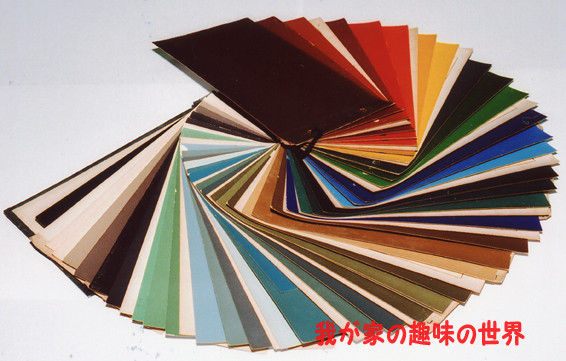
The 海軍航空機用塗料識別標準 假規117 別冊 (Kaigun kōkūki-yō toryō shikibetsu hyōjun 假規 117 Bessatsu, “Color identification Standard for Naval air plane –Temporary Specification No.117 Additional Volume”), often shorted to Kari Kikaku 117, Kariki 117 or “Provisional Standard 117”. Note that these swatches are not Kari Kikaku 117 itself, but a supplement to it. They are 206 x 114 mm.
The Kariki 117 is a IJNAF specification which describes the colours used for painting aircraft from November 26 1938 onward. It contains 54 colours, divided in 17 series ranging from A to Q. It was published November 26 1938.
Usage of this system was, as far as known, rather limited. The standard itself also does not specify the purpose of each colour. The most famous use was in the 空技報0266 (Yokosuka Kaigun Kokutai Report No.0266), or Kugiho 0266, a report by the Navy about future camouflages for the A6M from March 1942.
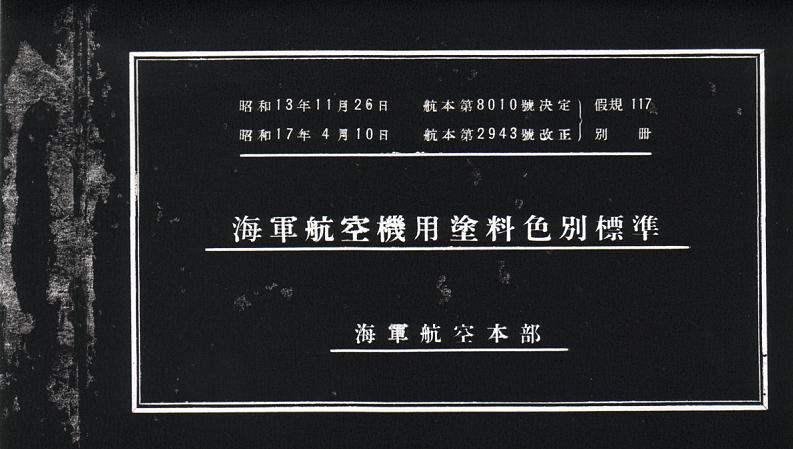
昭和13年11月26日 航本第8010號決定 } 假規117
昭和17年4月10日 航本第2943號改正} 別冊
海軍航空機用塗料色別標準
海軍航空本部
November 26, Showa 13 Aviation Headquarters Directive No. 8010 }Approved Temporary Specification 117
April 10, Showa 17 Aviation Headquarters Directive No. 2943 } Revised Supplement
Naval Aircraft Paint Color Identification Standard
Naval Aviation Headquarters
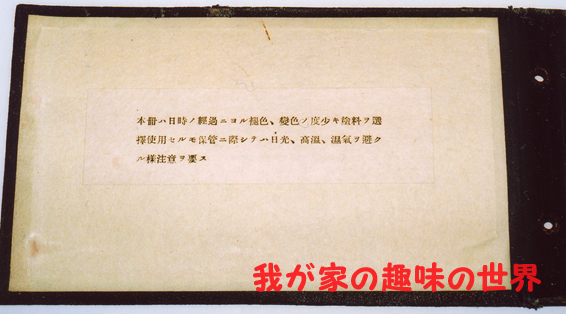
Note that for this page, due to the low resolution, my confidence in my transliteration is low. Notetheless, it still gives some insight in the text.
本冊ハ日時ノ握過ニヨル複色、鍵祓色ノ度少キ陰料を選
採使用セルモ保管二際テシハ日光、高温、温氣ヲ避ク
ハ様注意ヲ要ス
This book is made of selected inks that have a low degree of color and key color change due to the passage of time. When using or storing, please be careful to avoid sunlight, high temperatures, and heat.
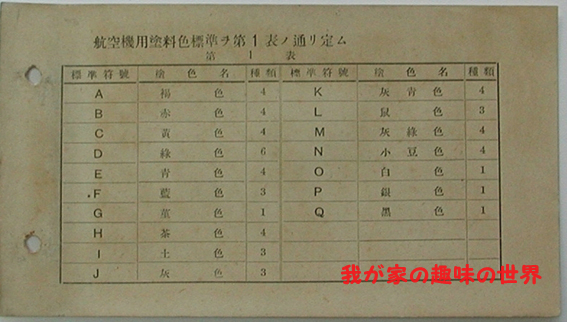
航空機用塗料色標準ヲ第1表ノ通リ定ム
第1表
????|?色名|??
Aircraft paint color standards are set as shown in Table 1.
Table No. 1
???? | ? colour name | ??
| Swatch | Code | Colour | Munschell | Gunze | Tamiya | Vallejo | Hataka | MRP | AK | AMMO-mig |
|---|---|---|---|---|---|---|---|---|---|---|
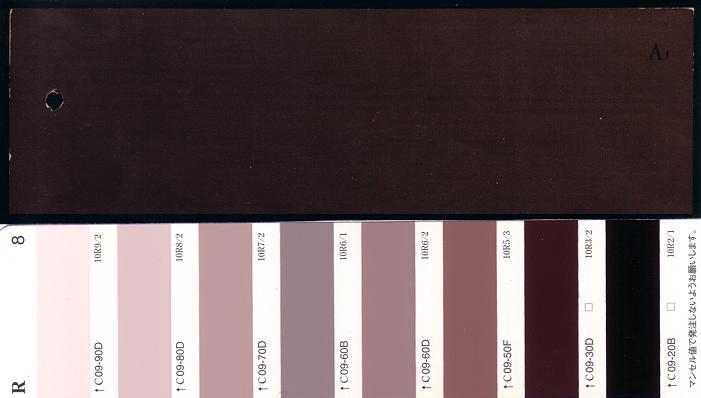
| A1 褐色 | brown | 10R 3/2 | |||||||
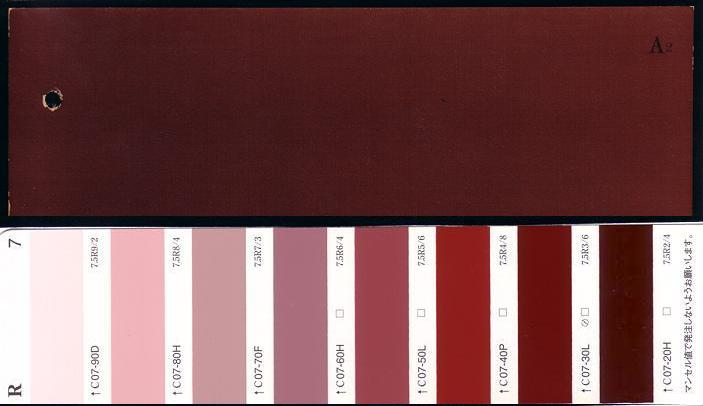
| A2 褐色 | brown | 7.5R 3/6 | |||||||
| Primer for metal surfaces Intermediate coat for fabric surfaces propeller blades and spinners | ||||||||||
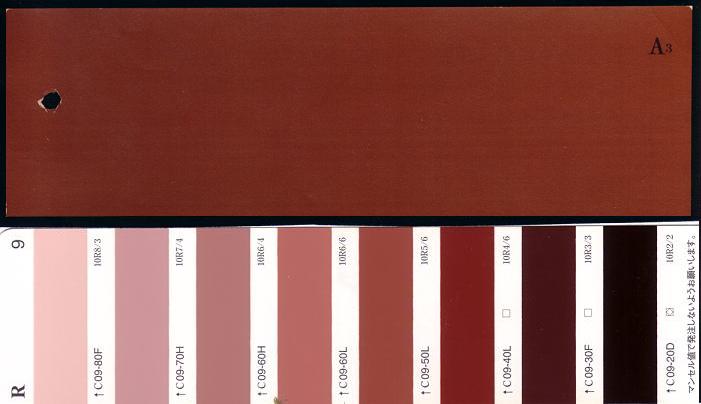
| A3 褐色 | brown | 10R 4.5/6 | |||||||
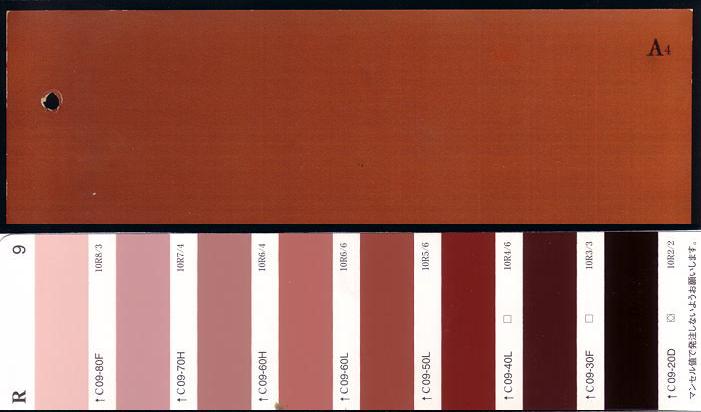
| A4 褐色 | brown | 10R 5.5/6 | |||||||
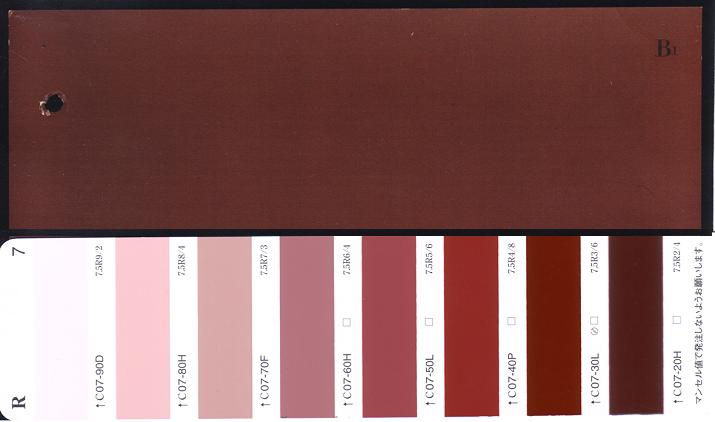
| B1 赤色 | red | 7.5R 3/4 | |||||||
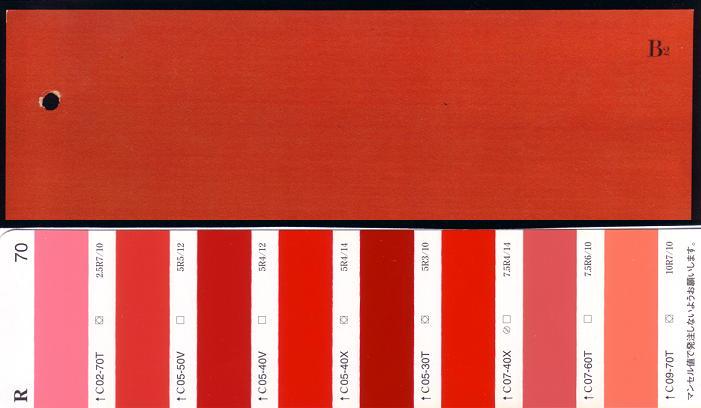
| B2 赤色 | red | 5R 4/12 | |||||||
| Markings Hinomaru’s | ||||||||||
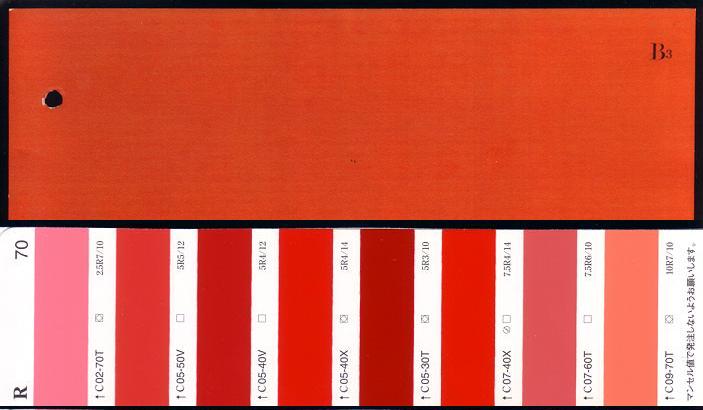
| B3 赤色 | red | 7.5R 4/14 | MRP-411 | ||||||
| Hinomaru colour up and to 1943 | ||||||||||

| B4 赤色 | red | 2.5YR 6/14 | |||||||
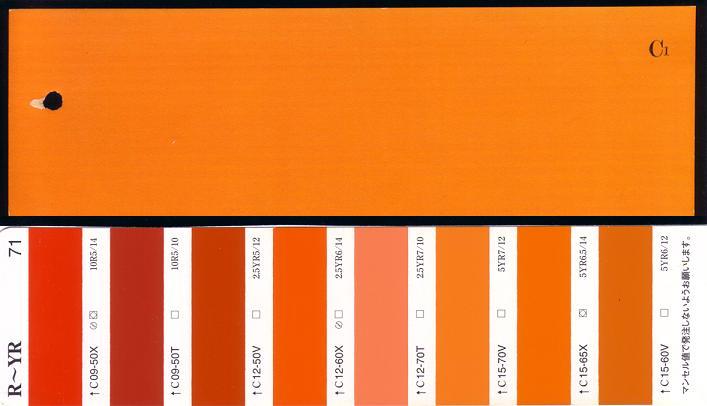
| C1 黄色 | Yellow | 5YR 6.5/12 | |||||||
| Warning colour, Propeller tip colour | ||||||||||
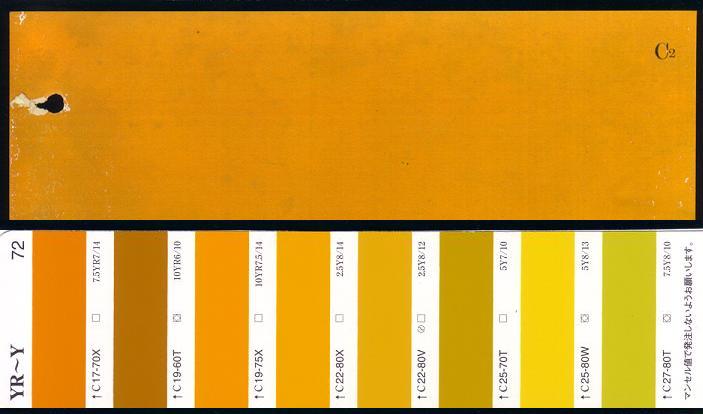
| C2 黄色 | Yellow | 10YR 7.5/14 | |||||||
| trainer and experimental aircraft colour | ||||||||||
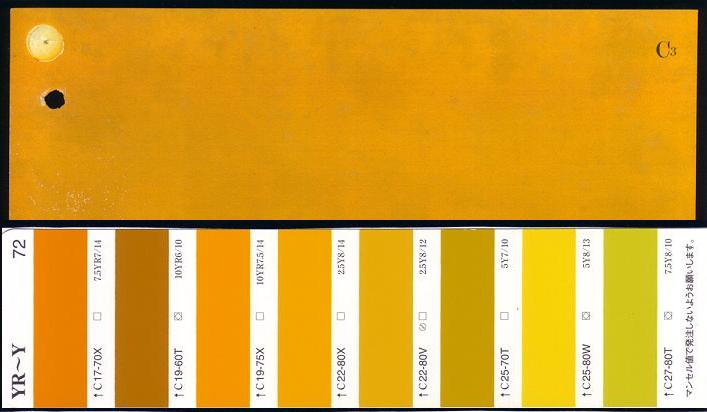
| C3 黄色 | Yellow | 2.5Y 8/12 | |||||||
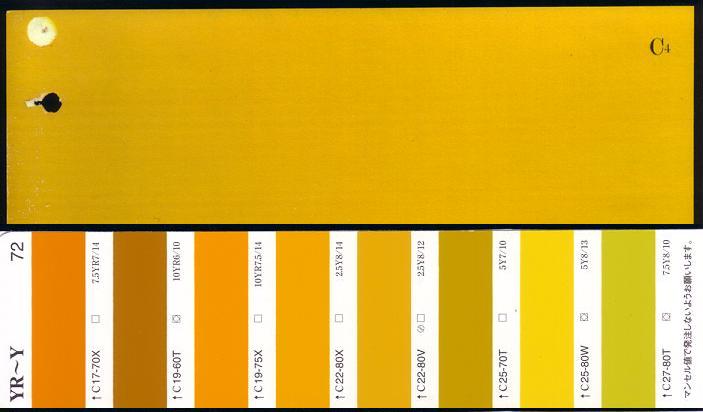
| C4 黄色 | Yellow | 4Y 8/13 | |||||||
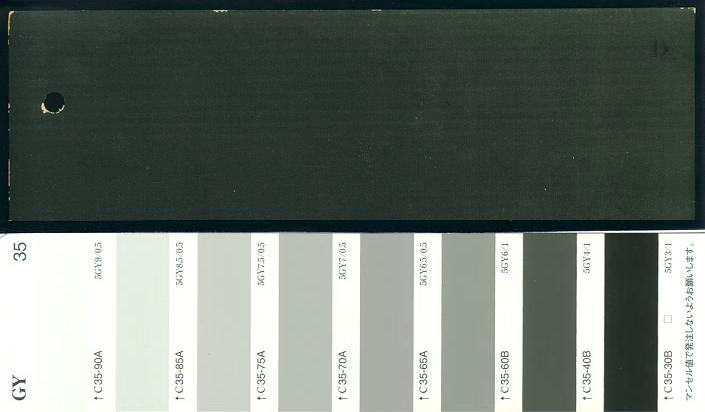
| D0 緑色 | Green | 5GY 3.5/1 | |||||||
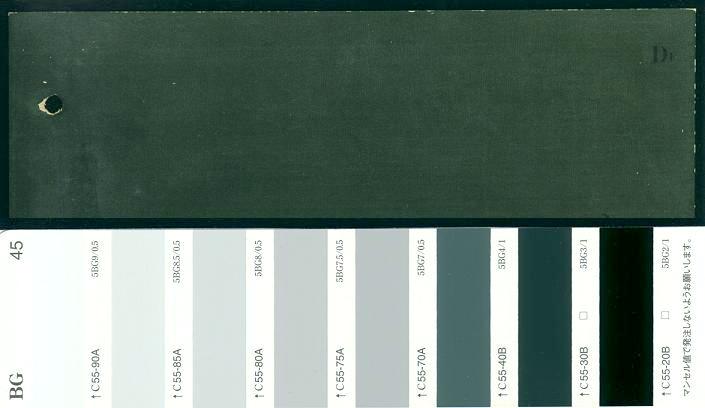
| D1 緑色 | Green | 5BG 3/1 | XF-11 | 71325 | AK11893 RC304 AK2063 | ||||
| upper side camouflage. Experimentally used as an upper surface camouflage on A6M2 “ヨ-109” as mono, and with J3 on “ヨ-107”. The experiment with mono D1 over J3 underside was accepted for standard use in 1944. cockpit panel colour of at least the Kyūshū Q1W Tokai. | ||||||||||
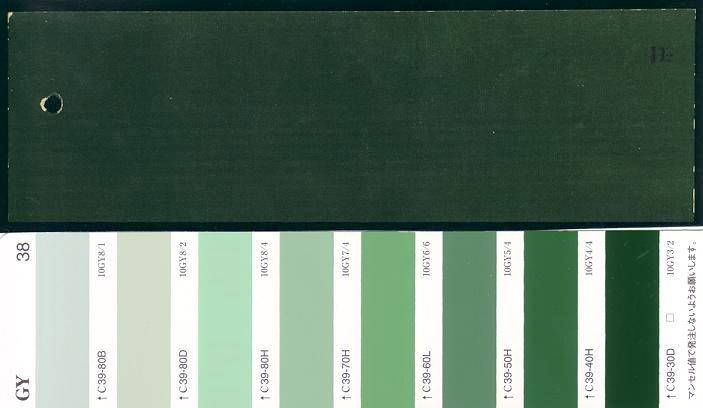
| D2 緑色 | Green | 10GY 3/2 | 71322 | MRP-425 | AK11894 RC305 AK2064 | ||||
| Camouflage paint | ||||||||||
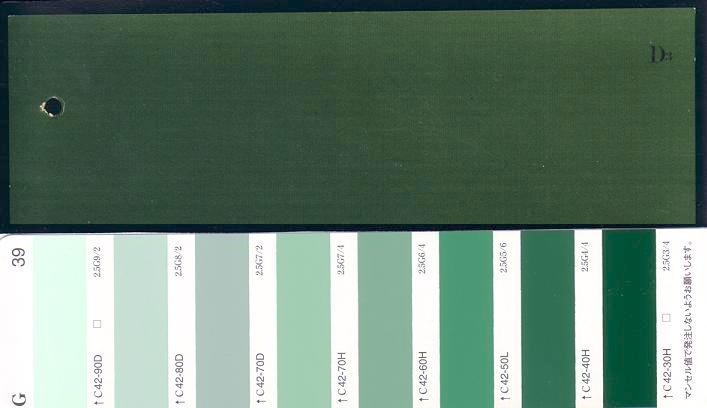
| D3 緑色 | Green | 2.5G 3/3 | |||||||
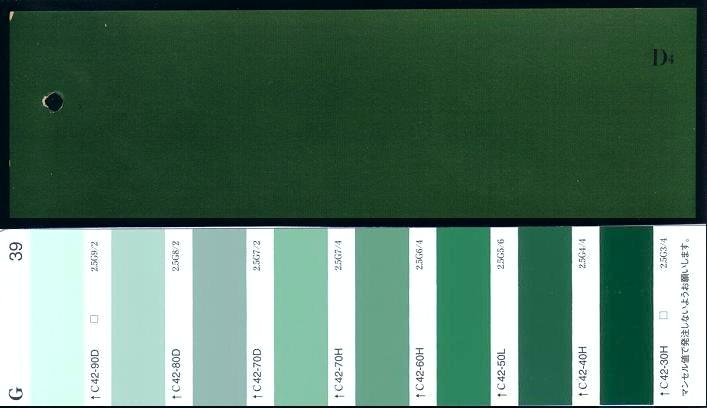
| D4 緑色 | Green | 2.5G 3.5/4 | |||||||
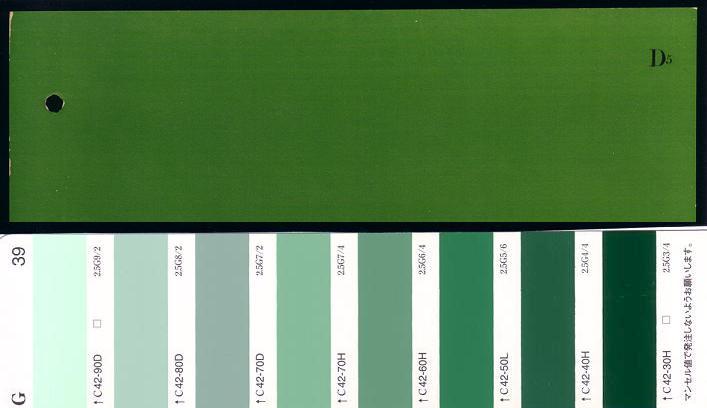
| D5 緑色 | Green | ||||||||
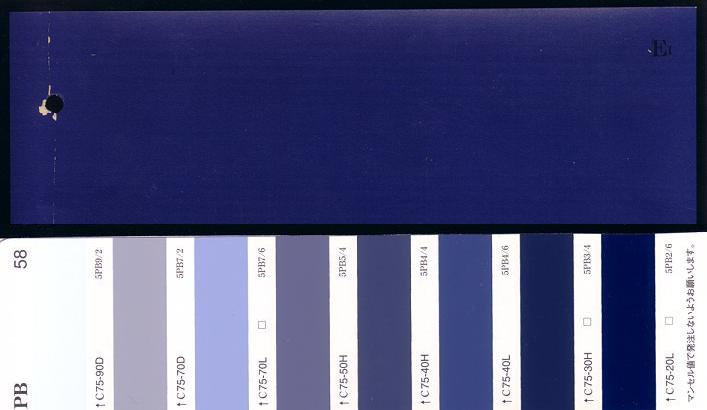
| E1 青色 | Blue | ||||||||
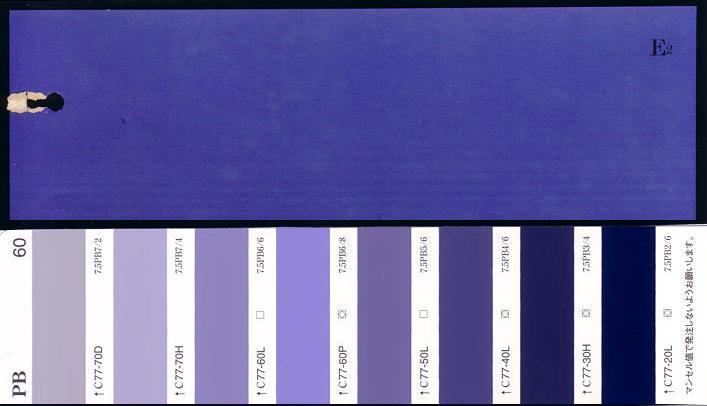
| E2 青色 | Blue | ||||||||
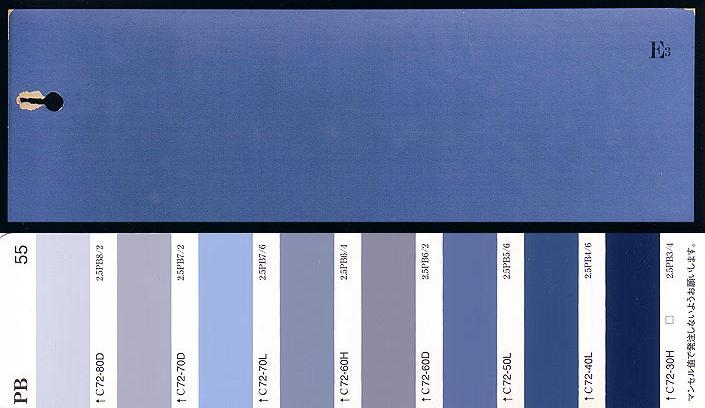
| E3 青色 | Blue | ||||||||
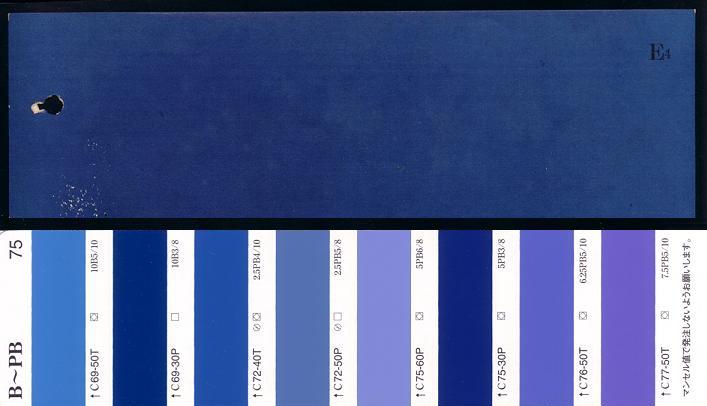
| E4 青色 | Blue | ||||||||
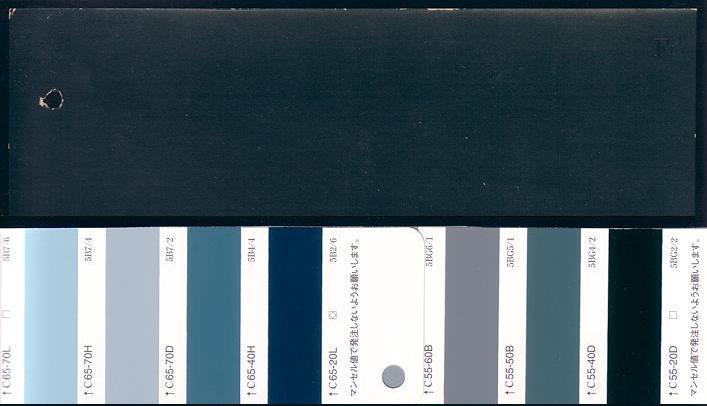
| F1 藍色 | Indigo | ||||||||
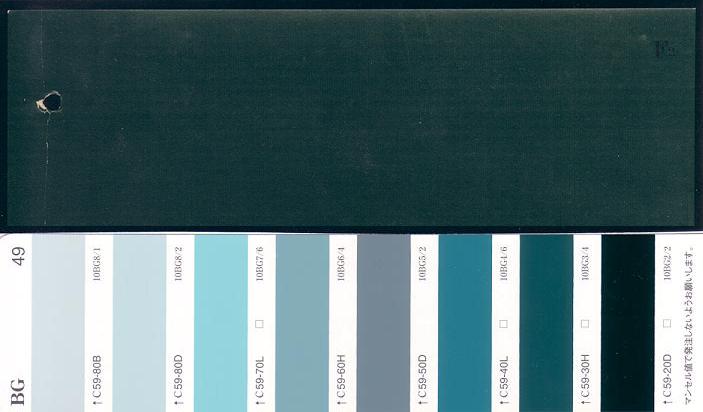
| F2 藍色 | Indigo | ||||||||
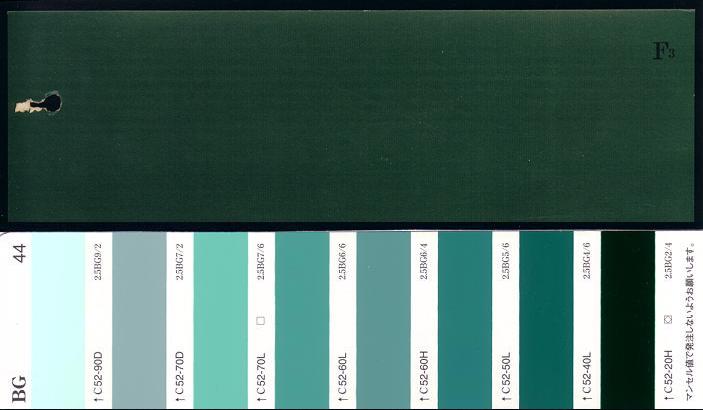
| F3 藍色 | Indigo | ||||||||
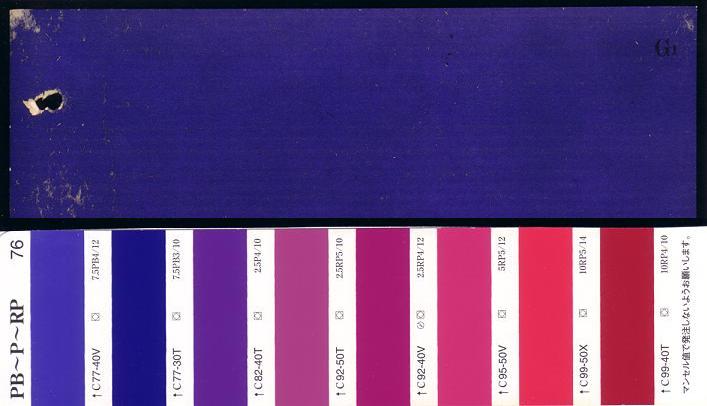
| G1 菫色 | Violet | ||||||||
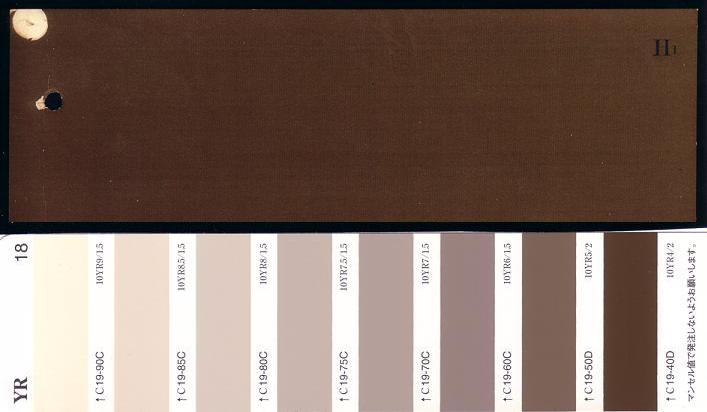
| H1 茶色 | Tea | ||||||||
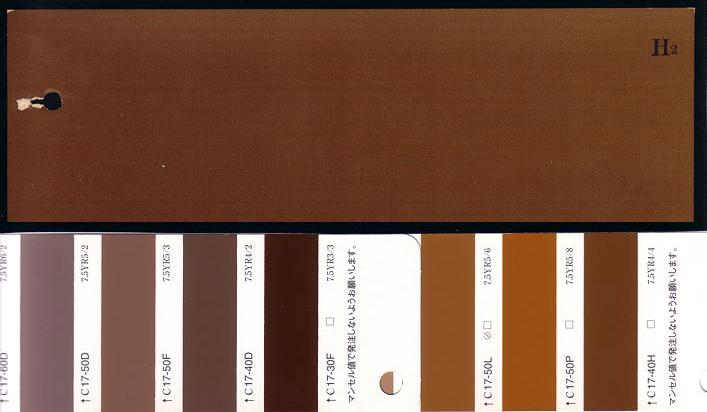
| H2 茶色 | Tea | ||||||||
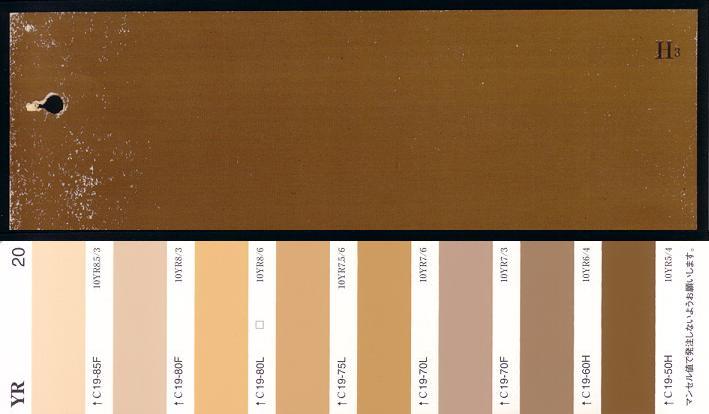
| H3 茶色 | Tea | ||||||||
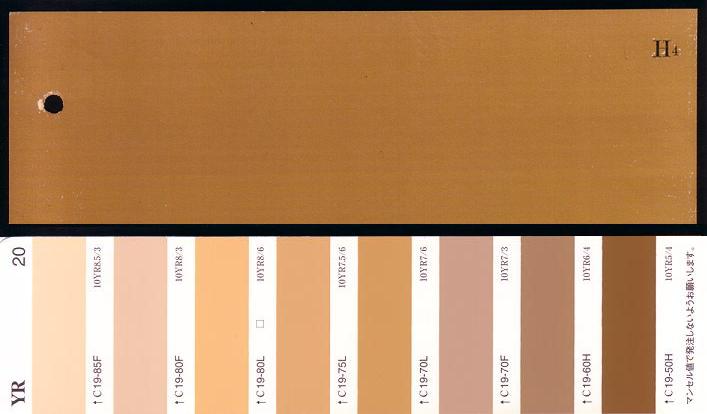
| H4 茶色 | Tea | ||||||||
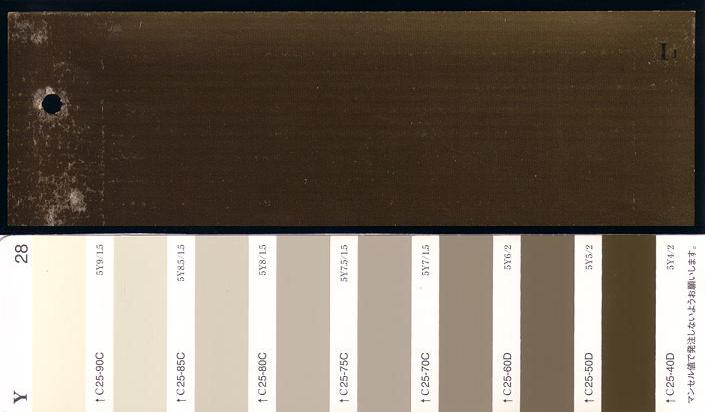
| I1 土色 | Soil | ||||||||
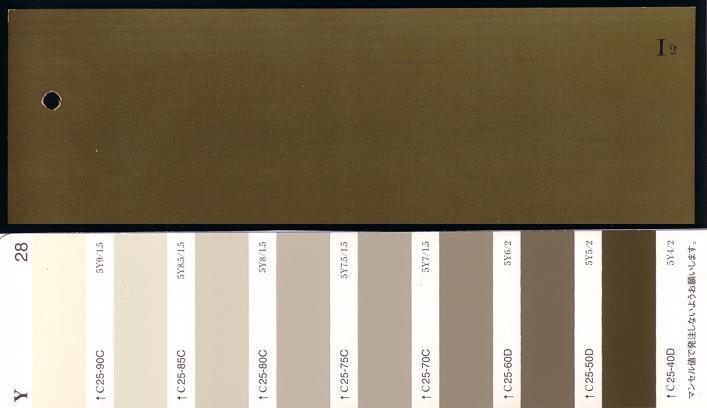
| I2 土色 | Soil | ||||||||
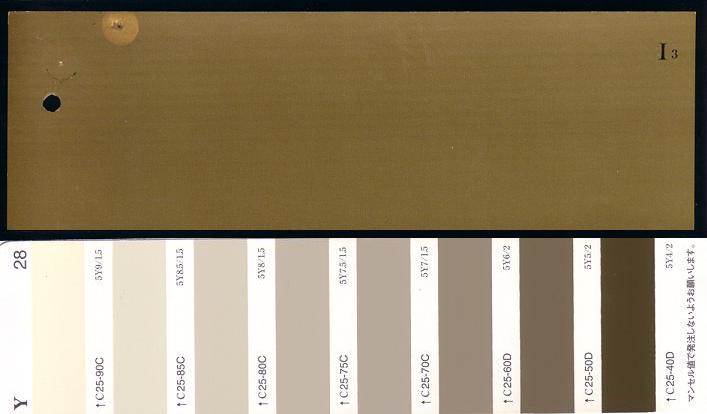
| I3 土色 | Soil | ||||||||
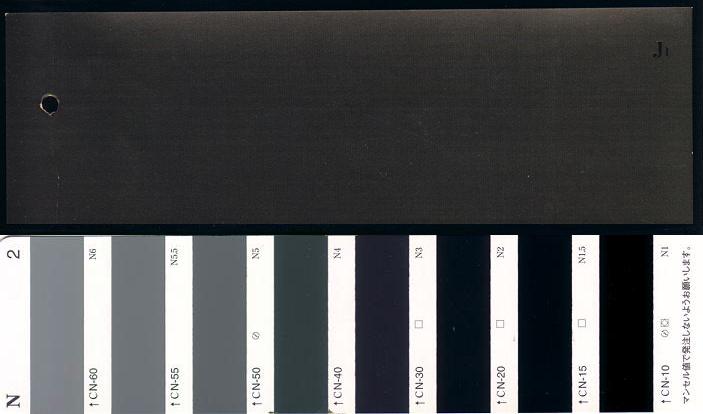
| J1 灰色 |
Mei kaishoku
Grey | ||||||||
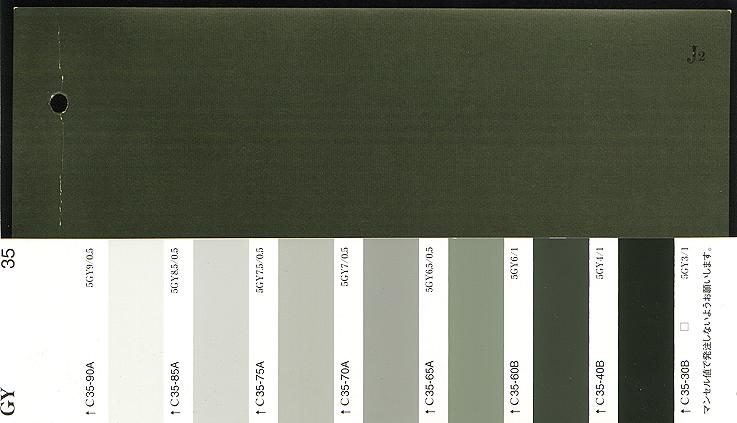
| J2 灰色 | |||||||||
| Experimentally used as an upper surface camouflage on A6M2 “ヨ-113 | ||||||||||
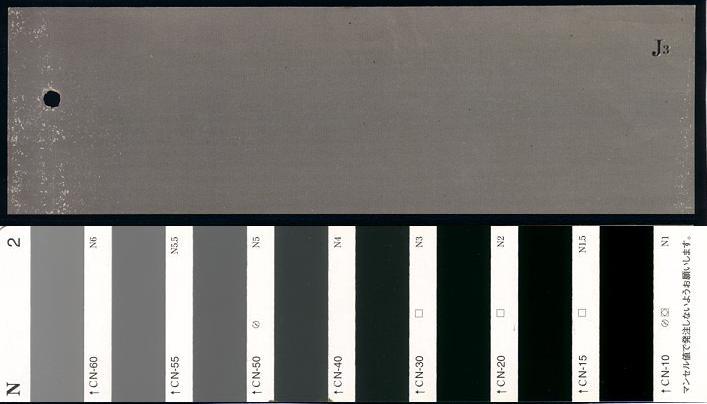
| J3 灰色 |
Haiiro
Ash Gray | ||||||||
| Sometimes said to be the famous early A6M overall camouflage, however this is unlikely as kugisho 0266 indicates this to be a distinct shade. Experimentally used as an upper surface camouflage on A6M2 “ヨ-105” as mono, and with D1 on “ヨ-107”. In 1944, D1 over J3 was accepted as the standard IJN camouflage pattern. front cover of engine gear reduction casings | ||||||||||
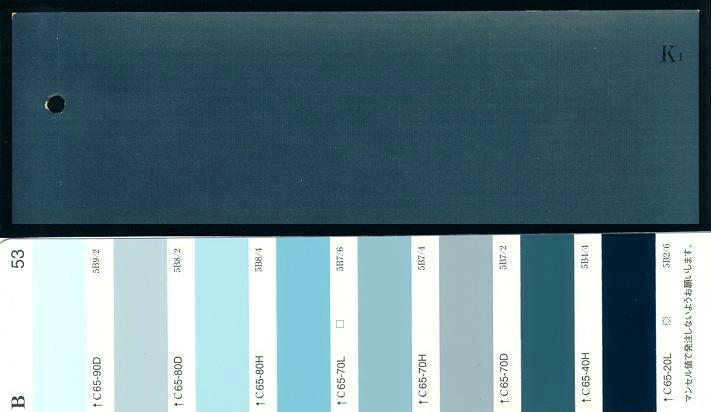 | K1 灰青色 | Gray Green | ||||||||
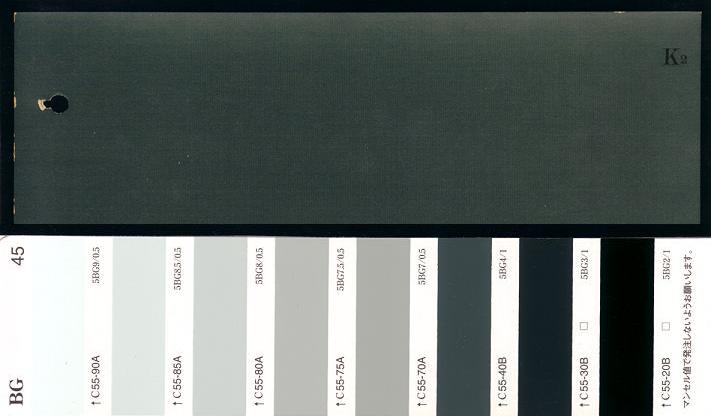 | K2 灰青色 | Gray Green | ||||||||
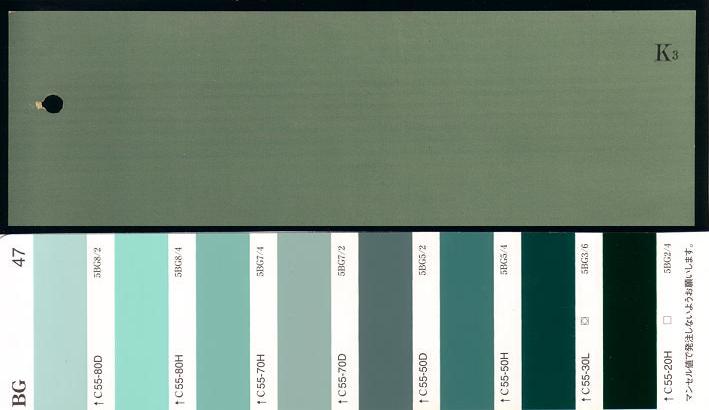 | K3 灰青色 | Gray Green | ||||||||
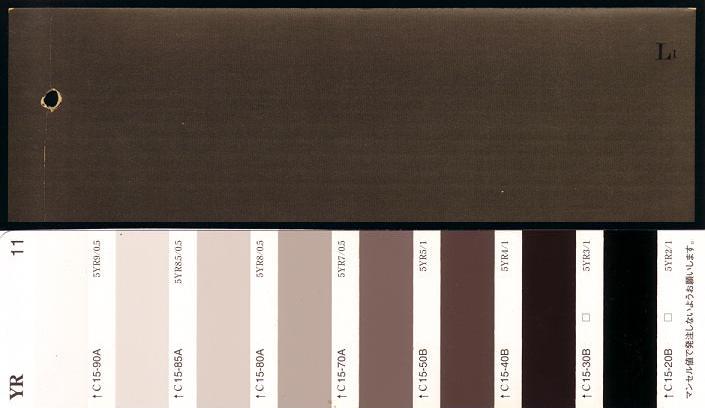 | L1 鼠色 | Rat grey | ||||||||
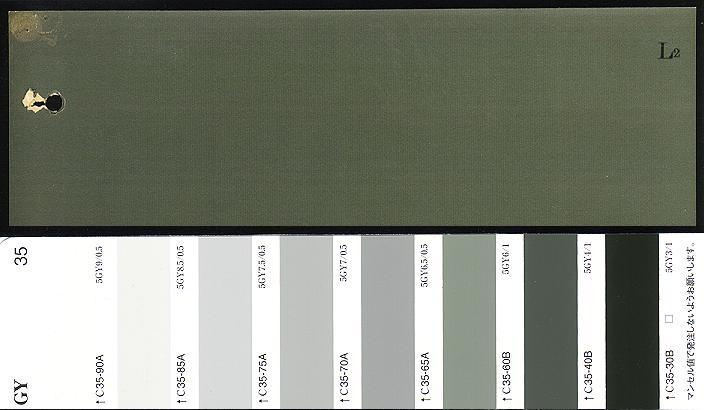 | L2 鼠色 | Rat grey | ||||||||
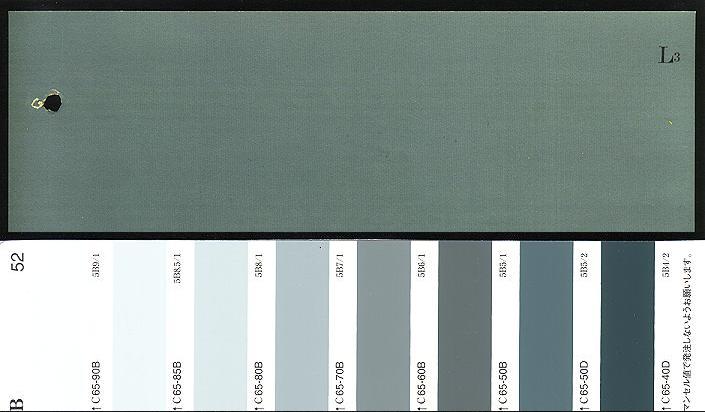 | L3 鼠色 | Rat grey | ||||||||
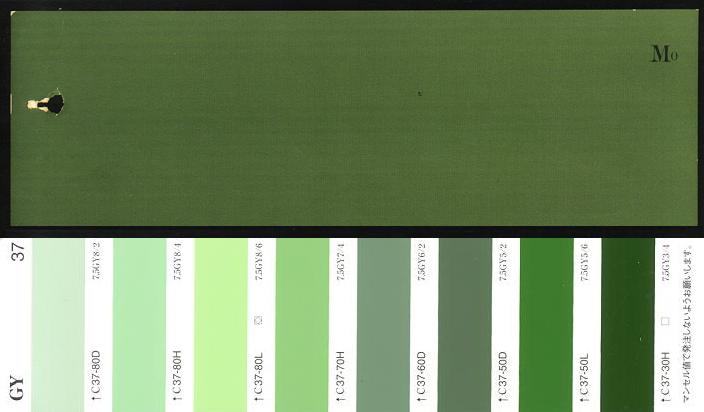 | M0 灰緑色 | Gray Green | XF-71 | MRP-430 MRP-413 | ||||||
| Official IJN cockpit interior colour | ||||||||||
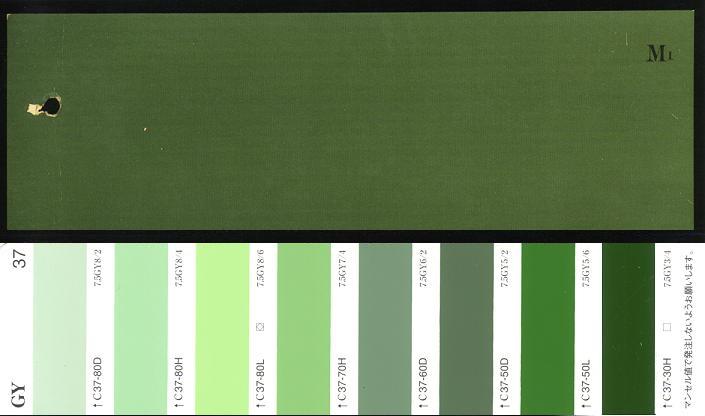 | M1 灰緑色 | Gray Green | XF-71 | MRP-413 | AK11897 RC307 AK2068 | |||||
| Official IJN cockpit interior colour Experimentally used as an upper surface camouflage on A6M2 “ヨ-151” | ||||||||||
 | M2 灰緑色 | Gray Green | MIG 270 | |||||||
| Mitsubishi Interior Colour | ||||||||||
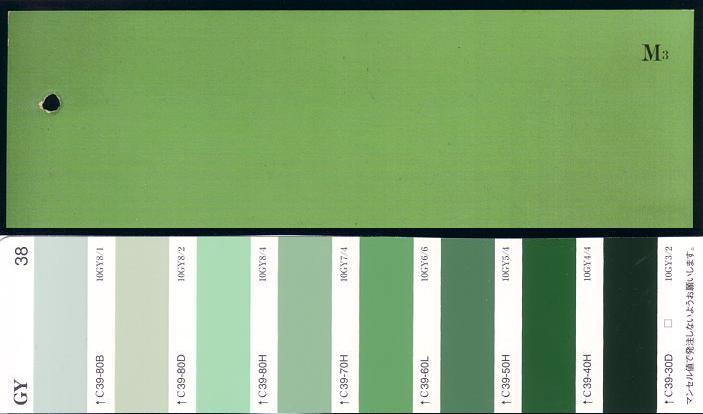 | M3 灰緑色 | Gray Green | C-127 | RC306 RC307 | MIG 269 | |||||
| Nakajima Interior Colour | ||||||||||
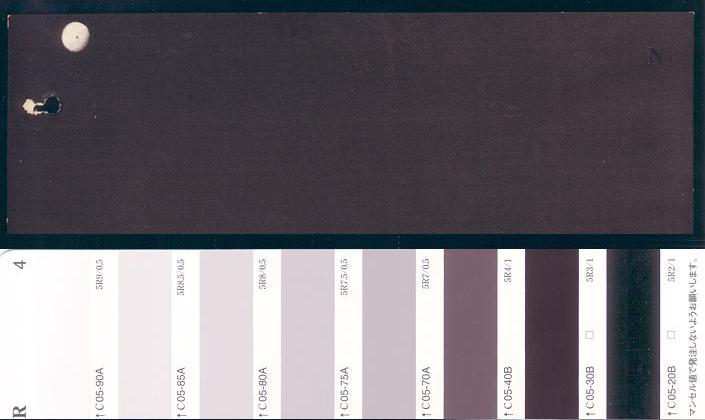 | N0 小豆色 | Adzuki Bean | C-131 | XF-64 | 71271 | HTK-*130 | MRP-431 | RC067 | MIG 913 | |
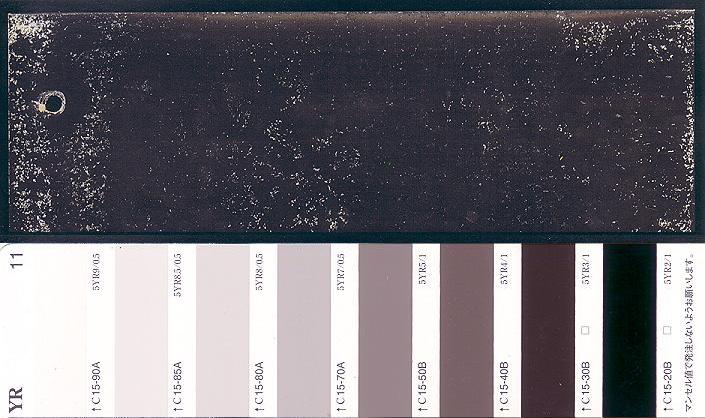 | N1 小豆色 | Adzuki Bean | ||||||||
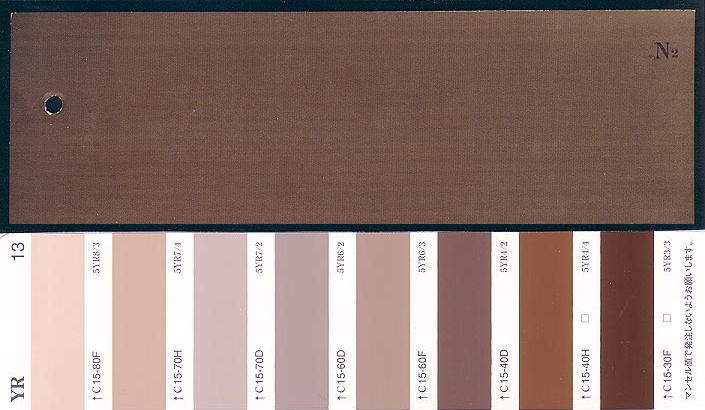 | N2 小豆色 | Adzuki Bean | ||||||||
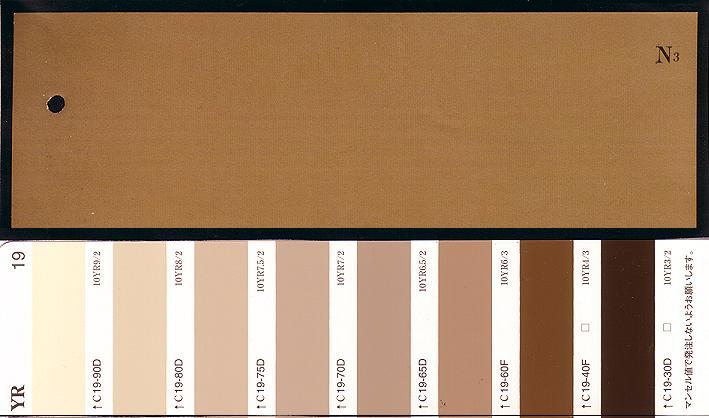 | N3 小豆色 | Adzuki Bean | ||||||||
| O1 白色 | White | |||||||||
| Markings | ||||||||||
| P1 銀色 | Silver | |||||||||
| Undersurface colour, alternative for J3 | ||||||||||
| Q1 黒色 | Blue Black | 71091 | HTK-*001 | MRP-432 | AK11895 AK2066 | MIG 227 | ||||
| The colour is almost black, but with a blueish tint Markings, Engine cowlings, Cockpit decking. | ||||||||||
空技報0266 / Kugishō 0266
The Yokosuka Kaigun Kokutai Report No.0266 is a report from the Yokusuka Naval Arsenal, published in March 1942. It details a study about a future camouflage for the Mitsubishi A6M Zero. Five A6M2 planes were painted with various camouflage schemes on their upper surface, their lower surface remained Ameiro, the name of the amber-grey colour as used in this document. Photographs were originally included in this document, however these are lost.
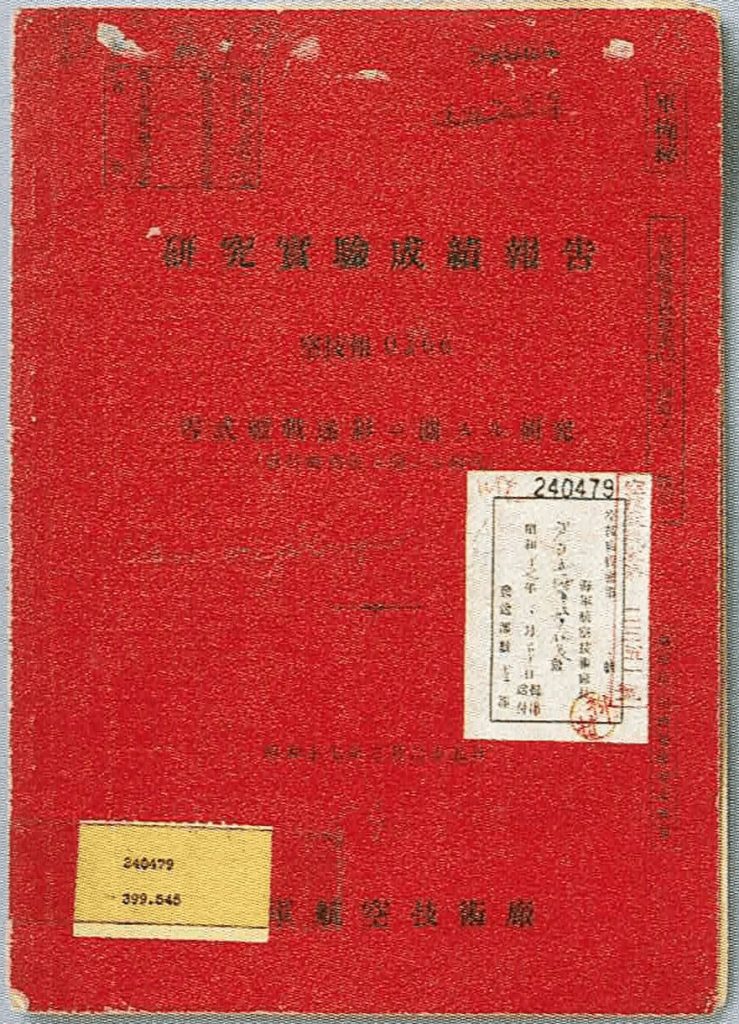
Four more aircraft ( ヨ-102, ヨ-108, ヨ-110 and ヨ-112 (ヨ is the katakana character for “yo”)) also took part in the trials, but weren’t repainted and kept in their Ameiro colour, likely as a control group.
ヨ-105 – J3 Upper side camouflage
ヨ-107 – Two tone splinter scheme consisting of D1 and J3.
ヨ-109 – D1 upper side camouflage
ヨ-113 – J2 upper side camouflage
ヨ-151 – M1 upper side camouflage
This experiment ultimately resulted in the D1 green upper side camouflage.
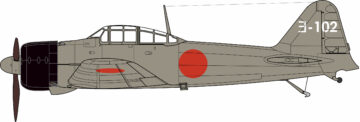
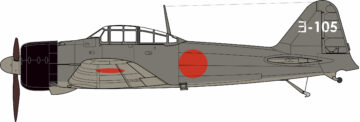
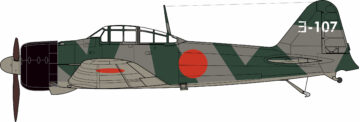
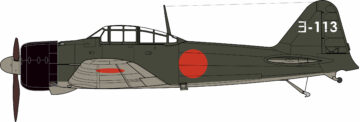
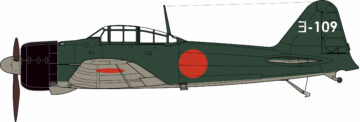

IJN gray / Ameiro
| Code | Colour | Equivalent | Gunze | Tamiya | Vallejo | Hataka | MRP | AK | Ammo MIG |
| Ameiro (Mitsubishi) |
Olive gray Amber gray |
XF-76 | 71311 | MRP-428 | AK11892 RC303 AK2062 |
||||
| Factory applied to A6M’s produced in Mitsubishi factories. Mitsubishi made Zero’s used a hinomaru without border. |
|||||||||
| Ameiro (Nakajima) |
Olive gray Amber gray |
XF-76 | 71311 | MRP-429 | AK11892 RC303 AK2062 |
||||
| Factory applied to A6M’s produced in Nakajima factories. Nakajima made Zero’s used a white bordered hinomaru. |
|||||||||
| #J3 | FS-36307 | 714312 | MRP-427 | AK11891 RC302 AK2061 |
|||||
| Possibly applied during field repairs / repaints. | |||||||||
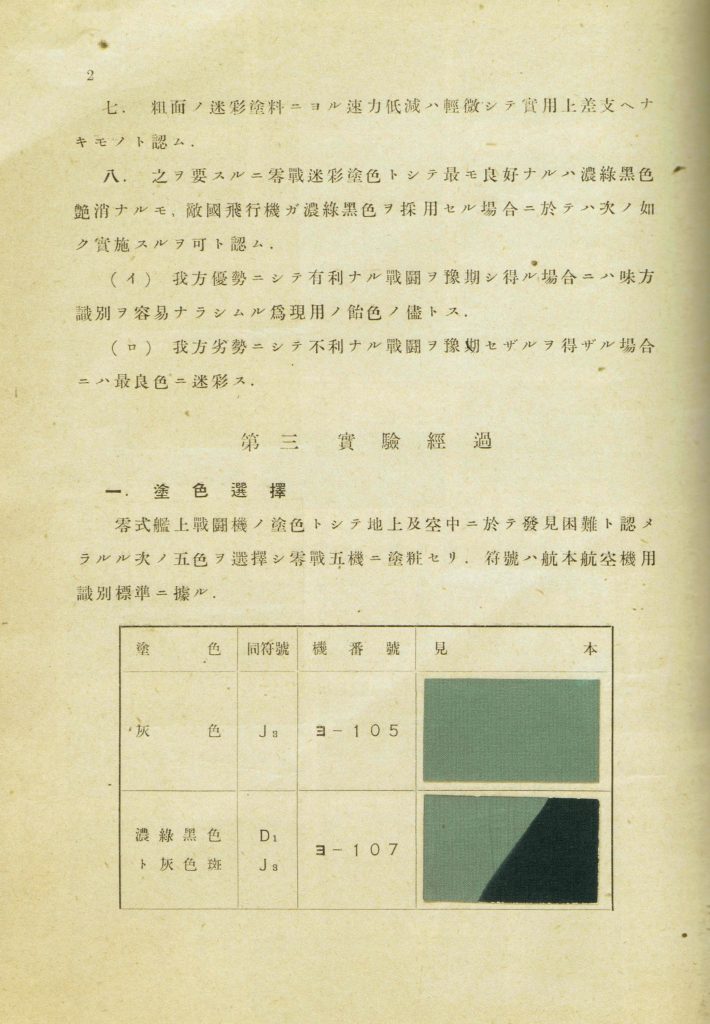
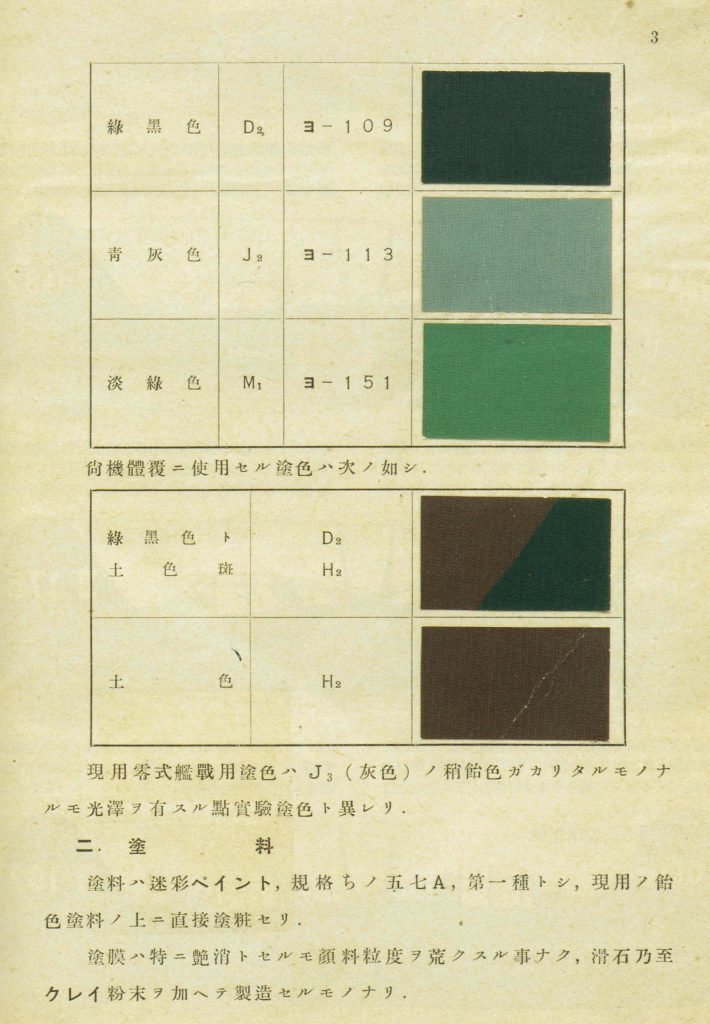

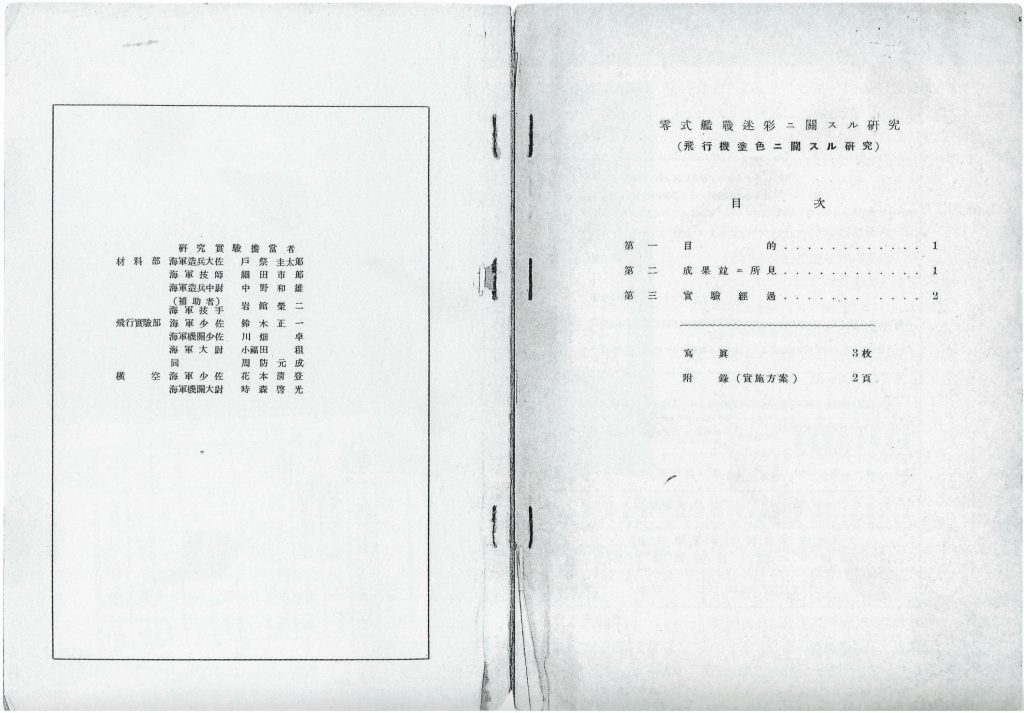

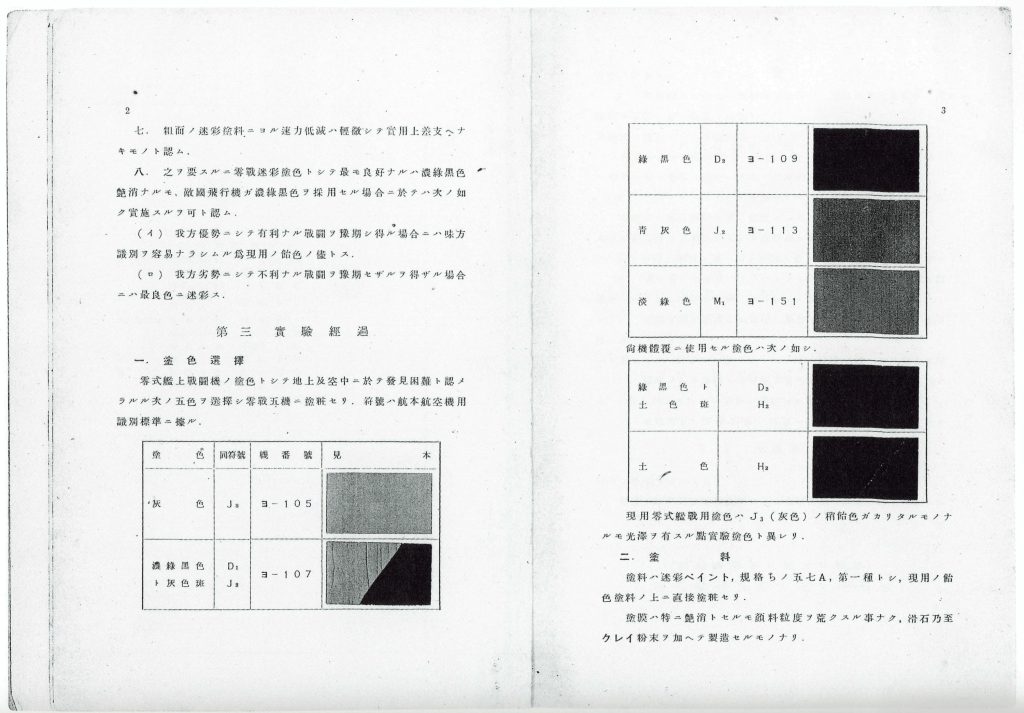
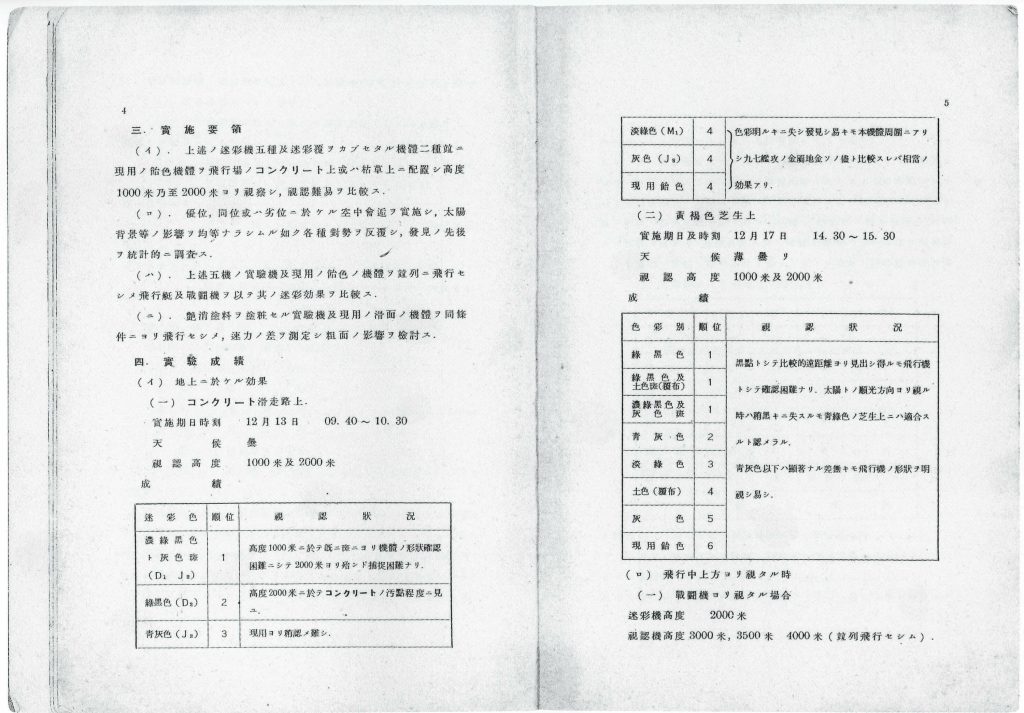
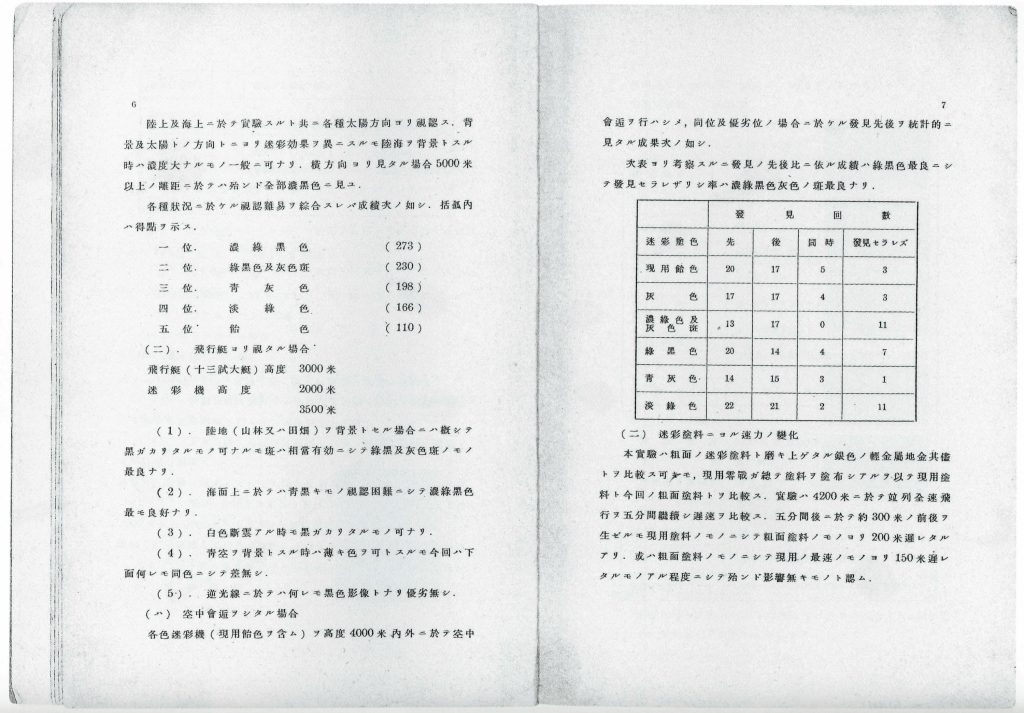

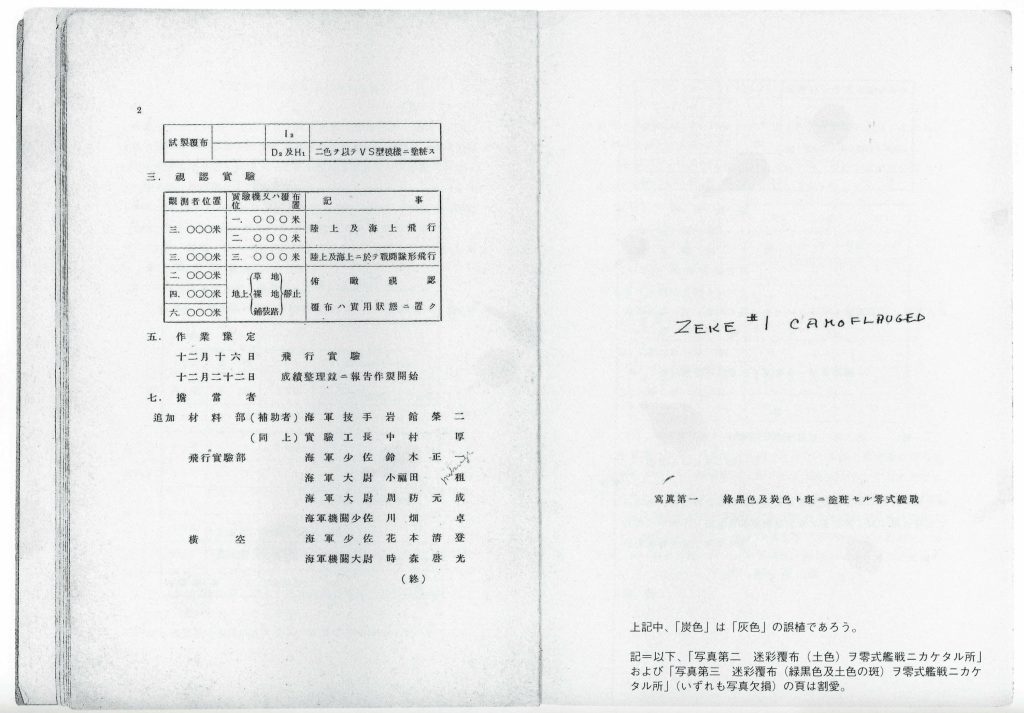
Translation & Transliteration
Front matter
| 研究實驗擔當者 | ||
| 材料部 | 海軍造兵大佐 | 戸祭圭太郎 |
| 細田市郎 | ||
| 中野和雄 | ||
| 岩館英二和 | ||
| Persons in charge of research and experiments | ||
| Department of materials | Naval Ordnance Colonel | Tomatsuri Keitarō |
| Engineer | Hosoda Ichirō | |
| Naval Engineer Lieutenant | Nakano kazuo | |
| (Assistant) Engineer Assistant | ||
Index
Study on the Coloring of the Zero Fighter
(Study on Aircraft Coloring)
Contents
First Purpose…………………….1
Second Results and Observations……….1
Third Experimental Progress………….2
Photographs 3 sheets
Appendix (Implementation Plan) 2 pages